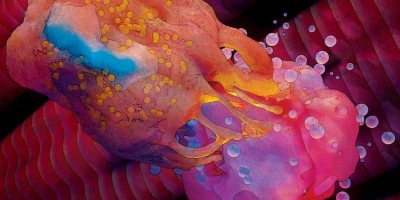Collateral arteries may act as natural bypasses that reduce hypoperfusion after a coronary blockage. 3D imaging of neonatal and adult mouse hearts, plus human fetal and diseased adult hearts, is now used to computationally predict flow within the heart, and understand the cardioprotective role of collateral arteries in vivo.

References
Timmis, A. et al. Eur. Heart J. 43, 716–799 (2022).
Virani, S. S. et al. Circulation 143, e254–e743 (2021).
Zhao, D. JACC Asia 1, 1–13 (2021).
Lazar, E. et al. Eur. Heart J. 38, 2333–2342 (2017).
Garbern, J. C. et al. Dev. Cell 57, 424–439 (2022).
Tian, X. et al. J. Mol. Cell. Cardiol. 167, 67–82 (2022).
Cortis, B. S. et al. Cardiologia 43, 77–81 (1998).
Wustmann, K. et al. Circulation 107, 2213–2220 (2003).
Seiler, C. Eur. J. Clin. Invest. 40, 465–476 (2010).
Zhang, H. et al. J. Mol. Cell. Cardiol. 87, 4–16 (2015).
He, L. et al. Cardiovasc. Res. 109, 419–430 (2016).
Das, S. et al. Cell 176, 1128–1142 (2019).
Anbazhakan, S. et al. Nat. Cardiovas. Res. https://doi.org/10.1038/s44161-022-00114-9 (2022).
Renier, N. et al. Cell 159, 896–910 (2014).
Kirst, C. et al. Cell 180, 780–795 (2020).
Olarte, O. E., Andilla, J., Gualda, E. J. & Loza-Alvarez, P. Adv. Opt. Photonics 10, 111–179 (2018).
Author information
Authors and Affiliations
Corresponding author
Ethics declarations
Competing interests
D.M. is a founder and stakeholder of Swift Front.
Rights and permissions
About this article
Cite this article
Mayerich, D., Wythe, J.D. Computational insights on coronary artery function. Nat Cardiovasc Res 1, 691–693 (2022). https://doi.org/10.1038/s44161-022-00115-8
Published:
Issue Date:
DOI: https://doi.org/10.1038/s44161-022-00115-8
- Springer Nature Limited


